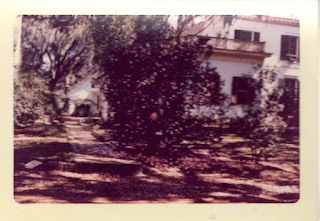Yesterday, we made an interesting find while cataloguing books. Tucked inside an autographed 1939 copy of Collected Poems of Robert Frost, was article about Robert Frost clipped from the New York Times Magazine dated January 15, 1961. The backside of the clipped article is also interesting. It is the beginning of an article on John F. Kennedy by Pulitzer Prize winner, James MacGregor Burns. The biographical note on Burns included in the article reads: "James MacGregor Burns, a member of the political science department at Williams, wrote 'John Kennedy: A Political Profile.'"
POLITICAL CRAFTSMAN IN THE WHITE HOUSE
Mr. Kennedy, it is suggested, has both the talent and the inclination for Presidential politics--and he will need them to sustain continuous leadership in the years lying ahead.
By JAMES MacGREGOR BURNS
In the long sweep of history the decisive mark of the man entering the White House Friday will not be his age, or his religion, or his Senatorial background, or the other matters so much discussed this past year. What is vital is that once again America will have a political craftsman as President.
Born of a political family in one of the most political cities, Mr. Kennedy has spent all his adult life, aside from the war years, in the scuffle of legislative and electoral combat. The key difference between the outgoing and incoming President is that Dwight D. Eisenhower dislikes this kind of politics and that John F. Kennedy consideres it indispensable to the operation of a great democracy, even inevitable. "No President," he says, "can escape politics."
The great test of Mr. Kennedy's Presidency will be the test he himself would be the first to apply: not whether he will be a politician--he will--but what kind of politician he will be and whether his kind of political craftmanship will be enough for the staggering job ahead. What are the prospects? The answer turns on the nature of the Presidential office and not on the nature of the man.
Most of the time the Presidency is not a command post from which clear and concerted orders are issued to troops waiting to spring into action. Most of the time it is a fulcrum of maneuver and bargaining, with the President seeking to convert a limited amount of power into governmental action. It is a place where he must deal with hundreds of other powerful men in the outside the Government with their separate sources of power. Most of the time the Presidency calls less for a master leader than for a master broker.
By experience and by temperament, Mr. Kennedy should qualify as a master broker. The Boston brand of politics in which he was schooled is a kind of institute of advanced training in political manipulation. For fourteen years in the Congressional labyrinth he has learned to negotiate with pround legislative leaders and party factions. In two hears of pre-convention delegate hunting, he had ot bargain with state officials and city bosses whose political interests were far different from those of a junior Senator on the make.
Like a good poker player, a master broker must be cool-headed and clear-minded, utterly realistic about his own hand and that of his opponents, unflustered and unwilling to be hurried. These, again, are keynotes of the President-elect's political style. Observers have noted again and again his detached attitute toward himself, his cold insight into the balance of power, and his capacity to move quickly or slowly as conditions demanded. His Cabinet-making was a case in point. Despite pressure to hurry on with the job, he took his time as he sorted and measured and cut to fit.
Skill in bargaining is vital not only in negotiation with foot-dragging Congressmen and Governors. A President must also bargain with Cabinet members and agency heads "supposedly" under him. "I sit here all day trying to persuade people to do the things they ought to have sense enough to do without my persuading them," said Harry S. Truman. "That is all the powers of the President amount to."
A new President soon finds that the neat lines of authority on the organization chart are actually snarled and broken by the political tempests that rage around the White House.
"When it comes to power," says Prof. Richard E. Neustadt of Columbia, a former Truman aide, "nobody is expert but the President; if he, too, acts as layman, it goes hard with him." Mr. Kennedy can be reated as a professional in the care and nourishment of political power. A President, he said to a visitor recently, must be careful not to use up his credit too quickly. He nees the best people around him, but in the end he must depend on himself. And, he added, he has only four years to make good.
To be effective, a master broker must operate at the center of the political cobweb. (and here our portion ends...)


.jpg)









